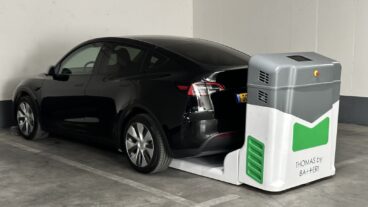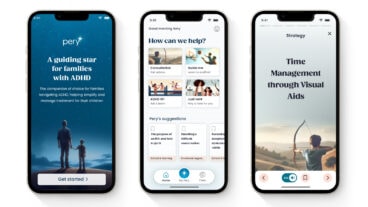IBM Israel’s Dan Chevion: We envisioned a large net where cars are connected in communication with each other and also with the infrastructure like lights and road signs.Oleg Goldshmidt and Dan Chevion envision a day when cars are so smart, they’ll be able to communicate directly with intersection lights and with each other. And that day may not be far off, as for the last year, the Israeli engineers have led a research initiative by the IBM Haifa Research Lab into equipping cars with technologies that can help reduce traffic congestion and prevent accidents.
The four-person Israeli team is conducting pioneering research into active safety and driver assist technologies in vehicles that exchange information with each other and with the road infrastructure, take corrective action where appropriate, and provide essential feedback to the drivers to help avoid dangerous situations.
“With half a billion cars on the road in the Western world alone, there’s a great opportunity to better regulate traffic flow and reduce congestion,” said Chevion.
In the US, car accidents cost $230 billion annually and in Europe the cost is 160 billion euros each year, not to mention the tragedy of hospitalization and deaths.
“The project had its seeds a few years ago when we were having a group think session looking for ideas… and we came up with the notion that the car in the future won’t just be wheels and steering – it will be more of a communications system and computer,” explained Chevion, the initiator of the project.
“The whole issue of traffic in the future that we envisioned will be a large net where cars are connected in communication with each other and also with the infrastructure like lights and road signs.”
After formulating the plan, Chevion then presented it to the powers that be at IBM who provided him with multi-year funding, enabling him to bring on Goldschmidt and the other members of the working group.
IBM Israel is the umbrella organization for all IBM activities in Israel and was established in 1950. It employs about 2,000 people, including those in the various labs. The IBM Haifa Labs include the Haifa Research Lab, the Haifa Development Lab, and the Israel Software Lab.
Working under the radar for the last year, Chevion’s group has only now decided to go public with their preliminary research. Much like automatic transmission, anti-lock brakes, and cruise control are now standard issue on vehicles, the advanced driver assist technologies that the IBM Haifa team are researching could become standard operating procedure on a future generation of cars. This will relieve the driver from having to perform some manual operations in complex driving situations.
According to Goldshmidt, an intelligent vehicle receiving information from its environment will be able to react to the rapidly changing situation on the road as if it had ‘reflexes’.
“Imagine a vehicle that’s totally aware of its surroundings – it has all sorts of sensors and receives information from other vehicles on the road or from cameras stationed at various places on the car,” he told ISRAEL21c.
“If the vehicle knows where it is in relation to other vehicles or the curb, that means you can drive closer to the other vehicles, or the side of the road. The car will always know what others are doing. If there’s an accident that takes place a few hundred yards in front of you, you’ll know it – and you don’t need to compromise safety without interrupting the traffic flow.”
But Goldshmidt cautioned that it still up to the driver to take the most appropriate action.
“No matter how smart the car is, the driver remains in control. Humans are still better than electronics in analyzing complex situations. How do you strike the balance between providing the driver with information and the car actually taking over? That’s the central question.”
According to Chevion, the IBM research is focusing in two directions – working on an algorithm and a way to collaborate where there are shared resources like intersections, and examining how the interface between a car and driver is likely to change.
“We don’t think that a driver is ever going to become someone like a pilot – with lots of panels and audio-visual warnings that he’ll respond to. It should be very simple – but still you want to get the advantage from the fact that your car knows that the car in front of you stopped before a human could possibly know it. That can change your whole intuitive thinking,” he said.
The two researchers become more animated when talking about the relationship between cars and intersections in the future road setup.
“Traffic lights make you stop and accelerate. But what if your vehicle was aware of the current situation in the intersection?” asked Chevion. “There could be a situation where the traffic light sends a signal directly to the car – then there can be priorities, for instance if an ambulance needs to pass through the intersection.”
Added Goldschmidt, “I can’t say that traffic lights will become obsolete, but in any situation, we’ll be able to do better than traffic lights.”
The two also agree that the reputation of Israeli drivers as among the world’s worst, is not exactly warranted.
Chevion: “Israeli drivers aren’t as terrible as their reputation.”
Goldschmidt: “Every night at 8 pm, you have every traffic accident in the country reported on TV, so it gives the impression that we’re bad drivers, but if you take deaths per capita, we’re better than others.”
But it’s not only Israeli motorists that the IBM Haifa team is conducting all that research for – it’s drivers around the world. And they think their project is traveling on the correct road, even if the traffic signs aren’t currently so clear.
“This is exploratory research – what eventually comes out of it could be specific products or combinations of different technologies. It’s all open,” said Chevion.
“Since we’re researchers, we’re looking forward in time and looking at what can be done when such information actually becomes available,” added Goldschmidt.
“We’re not thinking about the technology itself, we want to concentrate on the question of what can be done with the information in a theoretical sense – how we can help control traffic congestion and at the same time, bring safety to people and save lives.”












